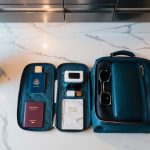The Best DIY Travel Apps: Essential Tools for Every Explorer
Traveling has become easier and more convenient with the rise of technology, offering a multitude of DIY travel apps that cater to all aspects of a journey. These apps can help travelers manage their itineraries, find the best flights, book hotels, and even navigate local transportation systems with ease. Whether someone is planning a weekend getaway or a month-long adventure, these tools are indispensable for a smooth trip.
Some travel apps focus on finding the best prices for flights and accommodations, ensuring travelers don’t miss out on any deals. Others excel in creating customizable itineraries, allowing users to plan their trips down to the minute. The ability to access transportation options seamlessly, such as ride-hailing services or public transit schedules, further enhances the travel experience.
With the right combination of travel apps, every aspect of a journey can be optimized to save both time and money. From booking flights to finding the perfect hotel and maneuvering through an unfamiliar city, these must-have tools are essential for anyone looking to make the most of their travels.
Selecting the Right Travel Apps
Choosing the best travel apps involves understanding key features and making informed decisions between free and paid versions. The right choice can enhance travel experiences while providing critical assistance throughout the journey.
Essential Features to Look For
When evaluating travel apps, specific features can make or break user experiences. Accurate real-time information is crucial. Look for apps offering reliable maps, public transportation details, and traffic updates. Another significant feature is offline functionality. This is especially beneficial in regions with limited internet access. The ability to store maps, itineraries, and booking confirmations offline ensures travelers stay informed.
Additionally, AI-powered features can greatly enhance an app’s usefulness. Examples include predictive suggestions for places to visit or personalized travel itineraries based on past preferences. Filters are also essential, allowing users to tailor searches to specific needs, whether it’s finding a budget-friendly restaurant or locating accommodation with particular amenities.
Security cannot be overlooked. Apps that offer built-in safety features such as emergency contacts or local crime alerts provide peace of mind. Finally, user-friendly interfaces and multilingual support ensure that travelers worldwide can navigate the apps effortlessly.
Comparing Free vs. Paid Options
Travel apps come in both free and paid versions, each presenting distinct benefits and limitations. Free apps typically offer basic functionalities, often supported by ads. They are excellent for travelers on a budget who don’t require advanced features or premium support. However, users may encounter limitations in offline access or depth of information.
Paid apps, on the other hand, remove ads and often provide enhanced features such as comprehensive itineraries, detailed offline maps, and custom filters. These versions may also include premium customer support, ensuring assistance is available around the clock. Investment in paid apps can result in a more streamlined and stress-free travel experience.
The decision between free and paid depends on the traveler’s specific needs and budget. For those requiring extensive functionalities and constant offline access, paid apps are likely the better choice. Conversely, for casual travelers needing only basic tools, free options are usually sufficient.



